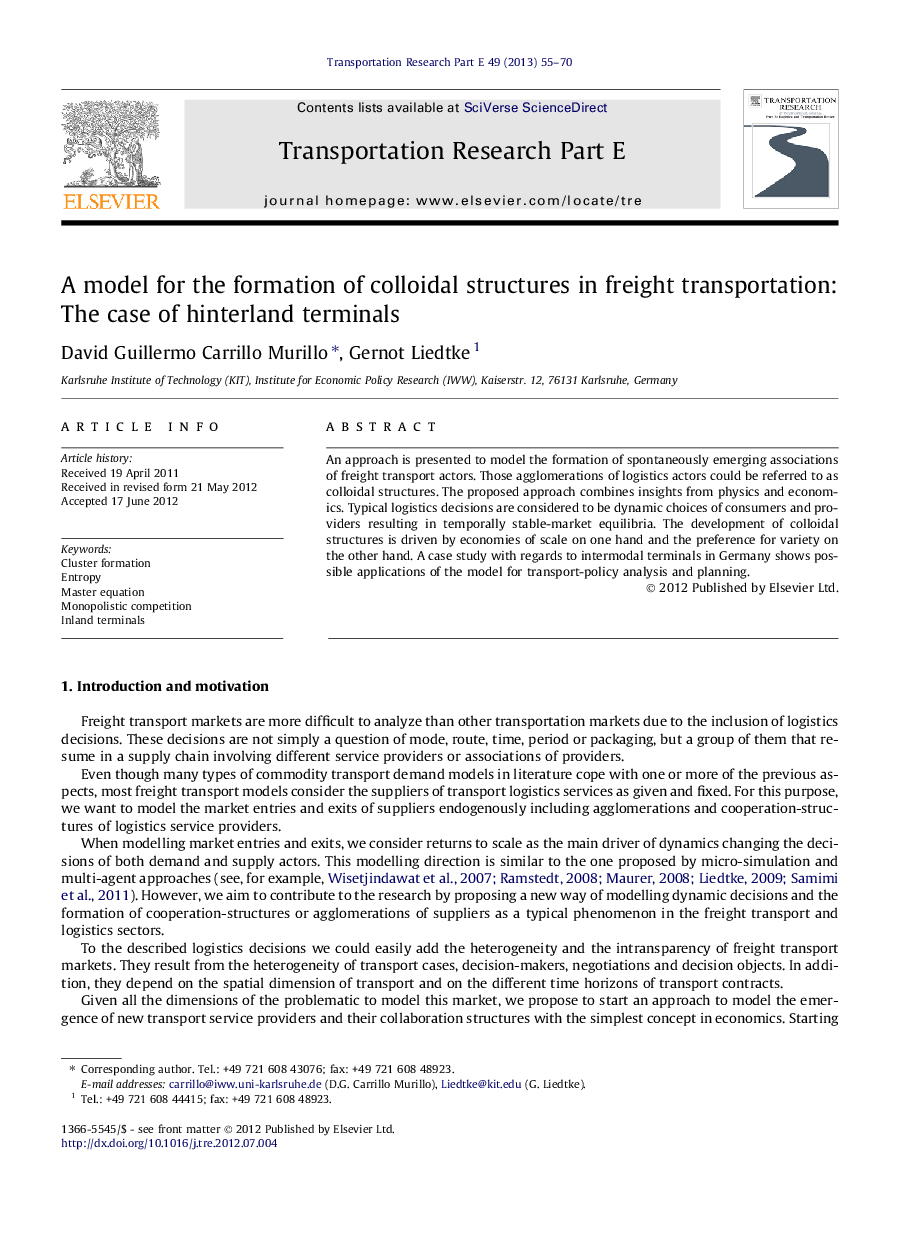| کد مقاله | کد نشریه | سال انتشار | مقاله انگلیسی | نسخه تمام متن |
|---|---|---|---|---|
| 1023533 | 941632 | 2013 | 16 صفحه PDF | دانلود رایگان |

An approach is presented to model the formation of spontaneously emerging associations of freight transport actors. Those agglomerations of logistics actors could be referred to as colloidal structures. The proposed approach combines insights from physics and economics. Typical logistics decisions are considered to be dynamic choices of consumers and providers resulting in temporally stable-market equilibria. The development of colloidal structures is driven by economies of scale on one hand and the preference for variety on the other hand. A case study with regards to intermodal terminals in Germany shows possible applications of the model for transport-policy analysis and planning.
► We model monopolistic competition for colloidal structures in commodity transport.
► The market equilibrium condition is turned into a maximization problem.
► The model is extended to study nested colloidal structures.
► The model predicts constant turnover and connections of inland terminals.
► Empirical analyzes confirm the model’s predictions.
Journal: Transportation Research Part E: Logistics and Transportation Review - Volume 49, Issue 1, January 2013, Pages 55–70